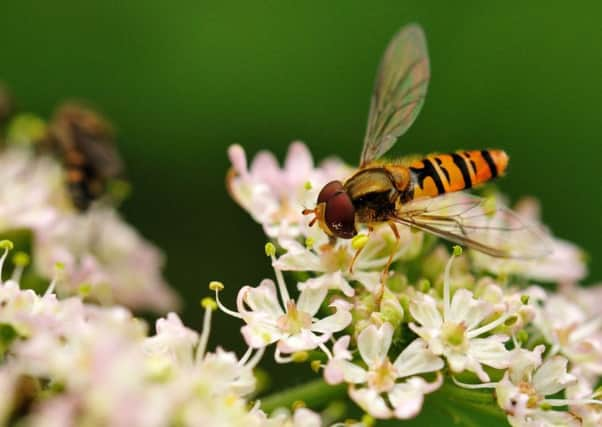Scientists issue crops warning over long-term pollinator losses


Population declines have been detected in a third of more than 300 species that were studied in the UK between 1980 and 2013. Just 11 per cent of species became more abundant.
Twenty-two of “the most important” pollinators were among the species that have thrived but scientists warned that overall biodiversity loss meant that problems were being stored up for the future.
Advertisement
Hide AdAdvertisement
Hide AdDr Gary Powney, a researcher from the Centre for Ecology and Hydrology in Oxfordshire, said: “While the increase in key crop pollinators is good news, they are still a relatively small group of species. Therefore, with species having declined overall, it would be risky to rely on this group to support the long-term food security for our country.
“If anything happens to them in the future, there will be fewer other species to step up and fulfil the essential role of crop pollination.”
The functions performed by pollinating insects is believed to be worth £690m each year to the UK’s economy.
Around 34 per cent of pollination is carried out by honeybees but a scarcity of hives means farmers rely on their wild cousins and other insects, especially hoverflies, for pollinating crops.
Advertisement
Hide AdAdvertisement
Hide AdThe new research is based on an analysis of more than 715,000 observational records collected by volunteers between 1980 and 2013.
A total of 353 bee and hoverfly species were included in the study which focused on around 19,000 “cells” each covering a square kilometre of countryside.
The results, published in the journal Nature Communications, reveal a biodiversity trend equivalent to losing four bee and seven hoverfly species per cell over the study period.
On average, the geographic range of bees and hoverflies has declined by about a quarter, with greater losses in upland areas of northern Britain.
Advertisement
Hide AdAdvertisement
Hide AdEnvironmental measures put in place by farmers, such as growing wild flowers in field margins and restoring hay meadows, are thought to have contributed to a 12 per cent increase in dominant pollinators.
But the delivery of countryside and environmental stewardship payments - which incentivise farmers to make on-farm improvements for wildlife - has been hampered by ineffective administration.
Last month, Environment Secretary Michael Gove said the delivery of the schemes was “still in a mess”, owing to historic government IT procurement decisions and, until recently, split responsibilities for the schemes between different government agencies.
The affects on pollinators of insecticide restrictions brought in since the study was carried out are not yet know, scientists said.
Advertisement
Hide AdAdvertisement
Hide AdIn 2013, the European Union introduced a temporary ban on the widespread use of insecticides known as neonicotinoids over fears they harmed bees.
Last year, the ban on three of the main neonicotinoid types was widened to cover all crops grown outdoors and made permanent.
Matt Shardlow, chief executive of the Buglife charity, said the latest analysis of observational pollinator records, provides “further evidence that the health of our environment and food supply cannot be taken for granted”.
